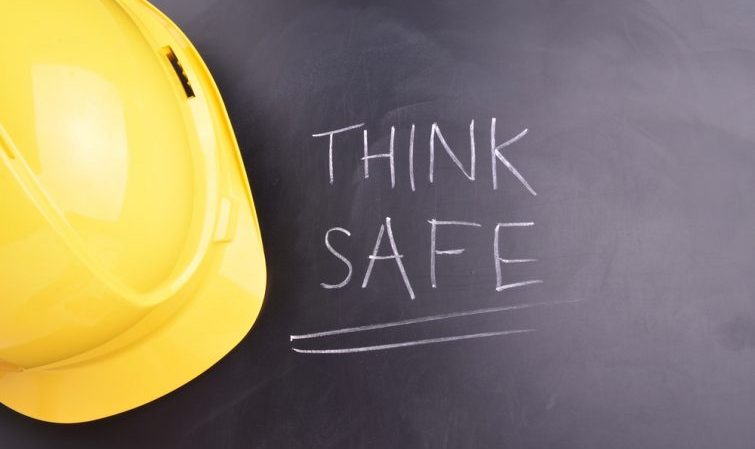Vicarious Liability: when an employee's actions become your responsibility
We’re taught to take responsibility for our own actions, but when it comes to health and safety, it’s not always so simple. Sometimes actions taken by an individual become the company’s responsibility - along with the consequences.
What is vicarious liability?
Vicarious liability is a legal concept in which one person or entity is held responsible for the actions of another person or entity. This means that if an individual or organisation is found to be vicariously liable, they can be held accountable for the actions of someone else.
The implication of this legal concept is that if a particular individual or organisation is found to be vicariously liable, they can potentially be held accountable and answerable for the actions or conduct of another individual or entity. Essentially, this implies that a party that is found to be vicariously liable can be compelled to answer for the conduct of an entirely distinct and separate party.
Vicarious liability is where someone is held responsible for the actions of another person. In the workplace, this can mean an employer can be held liable for the behaviour of their employees.
This can apply to many scenarios, from harassment and breach of trust to accidents and injury.
According to the Institution of Occupational Safety and Health (IOSH):
“In British criminal law, the employer has to look at the evidence that all reasonably foreseeable hazards were identified, and that all reasonably practicable controls were put in place. However, in civil law, vicarious liability is strict, with the organisation liable for what is done (or not done) on its behalf by employees”
So what is classed as vicarious liability? Let’s take a look at some examples.
Mr AM Mohamud v WM Morrison Supermarkets plc
When Mr Mohamud was violently assaulted by a petrol pump assistant employed by Morrisons, he argued that the supermarket should be vicariously liable for his attacker’s actions. Despite originally ruling VM Morrison as not liable, on appeal, it was ruled that they were indeed vicariously liable for the assault, as Mr Mohamud was acting in ‘the field of activities’ assigned to him by his employer at the time.
Commenting on the ruling, Clyde & Co solicitors stated that “the danger from an employer’s point of view [of this case] is that any link to an employee carrying out his “field of activities” will be sufficient to establish that the employer should be held liable”.
Cox v Ministry of Justice
Mrs Cox was injured during the course of her employment as a Catering Manager for the Ministry of Justice (MOJ) when a prisoner dropped a sack of rice, causing a back injury. She lodged a claim with the MOJ, but they claimed as they did not employ the prisoner, they were not at fault. The Supreme Court disagreed and ruled that the MOJ were vicariously responsible for the prisoner’s actions. They ruled that as the MOJ were ultimately responsible for providing essential services, like meals, within the prison and the prisoner was paid a nominal fee for his services they had an employer/employee relationship and so could be held vicariously liable for his actions.
What is the difference between vicarious liability and strict liability?
Vicarious liability, a legal doctrine that assigns responsibility to one party for the actions of another, is characterised by a degree of complexity that is different to the concept of strict liability.
Specifically, the former is applied in situations where an employer is held responsible for their employee’s actions, without any requirement of negligence or intentionality. Strict liability concerns itself with the responsibility for harm caused by a single party, regardless of the presence or absence of fault or intention.
When comparing the two concepts, there are several important differences, each with its own intricacies and nuances. Firstly, the legal basis for vicarious liability is rooted in the relationship between two parties, whereas strict liability is based solely on the actions of a single party. Secondly, the fault requirements for each concept differ significantly, with vicarious liability not necessitating any level of negligence or intentionality on the part of the responsible party, while strict liability only requires proof of the act itself. Finally, while vicarious liability is primarily used in the context of employer-employee relationships, strict liability has a much broader scope of application, including areas such as product liability and environmental law.
What are the types of vicarious liability?
These are some of the types of vicarious liability:
Employer/Employee Liability: This occurs when an employer is deemed responsible for the actions of an employee that lead to harm inflicted on a third party. An example would be if a delivery driver, while on the job, caused an accident that resulted in damanges or injuries to an individual. This would mean the company employing the driver could be held vicariously liable for the driver’s actions.
Principal/Agent Liability: This occurs when a principal (such as a company) is held responsible for the actions of an agent (such as a contractor or subcontractor) that lead to harm inflicted to a third party. For instance, consider a situation where a construction company employs a subcontractor to assist with work on a site and the subcontractor causes damage to neighbouring property, the construction company can be held liable for any resulting damages.
How can an employer be held vicariously liable for an employee’s actions?
Employers may be subject to vicarious liability for the actions of their employees, provided it can be evidenced that the employees were acting within the scope of their employment during the time of any incident. If it can be proven that the employee was performing duties that were part of their job, then the employer could be subject to vicarious liability laws.
Can a company be held vicariously liable for a contractor’s actions?
The issue of whether a corporation can be vicariously liable for the actions of a contractor or independent service provider is really dependent upon the specific circumstances surrounding the situation. In coming to such a conclusion, any factors such as the extent of control over the contractor’s work and the nature of the working relationship between the company and the contractor may be taken into consideration.
Is vicarious liability covered by liability insurance?
Coverage for vicarious liability under liability insurance varies depending on the policy’s terms and conditions. Reviewing the policy is key to determining the extent of coverage, as it may or may not include vicarious liability.
Keep on the right side of the law
One of the most important things you can do to ensure that you keep on the right side of health and safety law is to ensure that you:
- put all necessary safety measures in place to prevent and mitigate harm and;
- train every employee to follow your health and safety procedures.
Taking these steps means that should an employee be harmed, or they harm someone else in the course of their duties, you will be able to demonstrate that you took all the measures you could to prevent the incident.
So far is as reasonably practicable
A really important term here is ‘so far as is reasonably practical’. This is the official terminology used in health and safety legislation and it means that the law recognises that it is not possible to prevent every accident or injury. However, the law does expect that as an employer, you will do everything you can to prevent or mitigate any harm that can come to your employees or anyone else.
Steps you can take to protect your business - and employees
Risk assessments
Risk assessments are formal documents that cover all the risks that employees could face during the course of their employment and the measures you are putting in place to control them. It should be regularly reviewed to ensure that it is up to date and no new hazards have been identified. Failure to conduct appropriate risk assessments can leave you in breach of health and safety legislation.
Find out more about risk assessments
Policy documents
Policy documents are another type of formal document that show your adherence to legislation. Health and safety policy documents detail all of your safety procedures. Staff should be made fully aware of where the policies are kept and they should form part of your training documentation.
Training
Health and safety training is one of the most important aspects of your health and safety provision. Staff must be made aware of your safety and behavioural expectations, any potential dangers, safety procedures and how to deal with emergency situations. It is also important that the provision of any training is documented, so that if needed, it can be used as evidence.
Specialist solutions
Many employers implement safety equipment and solutions that aim to keep staff safer at work, such as protective clothing, specialist tools and panic alarms.
Our lone worker safety app, StaySafe, is one such solution that employers implement to ensure that their employees are better protected during their working hours. Consisting of an app and cloud based hub, StaySafe gives visibility of employee locations and allows staff to immediately signal for help in an emergency. Should something happen, not only will the employee receive immediate assistance, all monitoring and response activity is recorded for future reference in a cloud-based hub.
Not only does the provision of equipment keep staff safer, it also demonstrates that you are doing all you can to keep your staff and others safe from harm.
The bottom line
As an employer, you must ensure that your staff – and everyone else – are kept safe. Failure to do so can be extremely damaging, to individuals, your reputation and your finances.
It is important that you prioritise safety through the provision of policies, procedures, training and equipment. Through the documentation of these activities, you can demonstrate your commitment to following health and safety best practice, just in case anything ever does go wrong.
Lone workers can be at higher risk whilst working, as there is no one to raise the alarm in an emergency. Having visibility of staff locations and giving them a way to quickly signal for help in an emergency is one way you can boost your health and safety provision and demonstrate your duty of care to staff.











